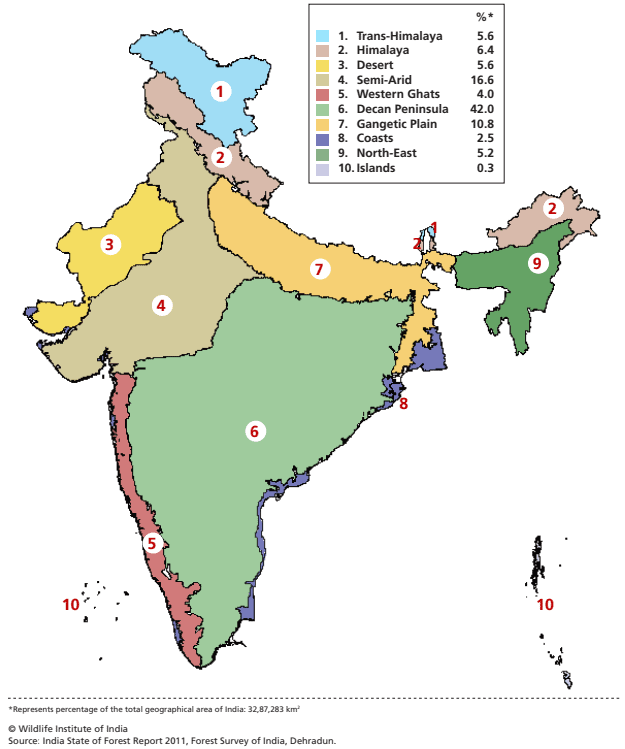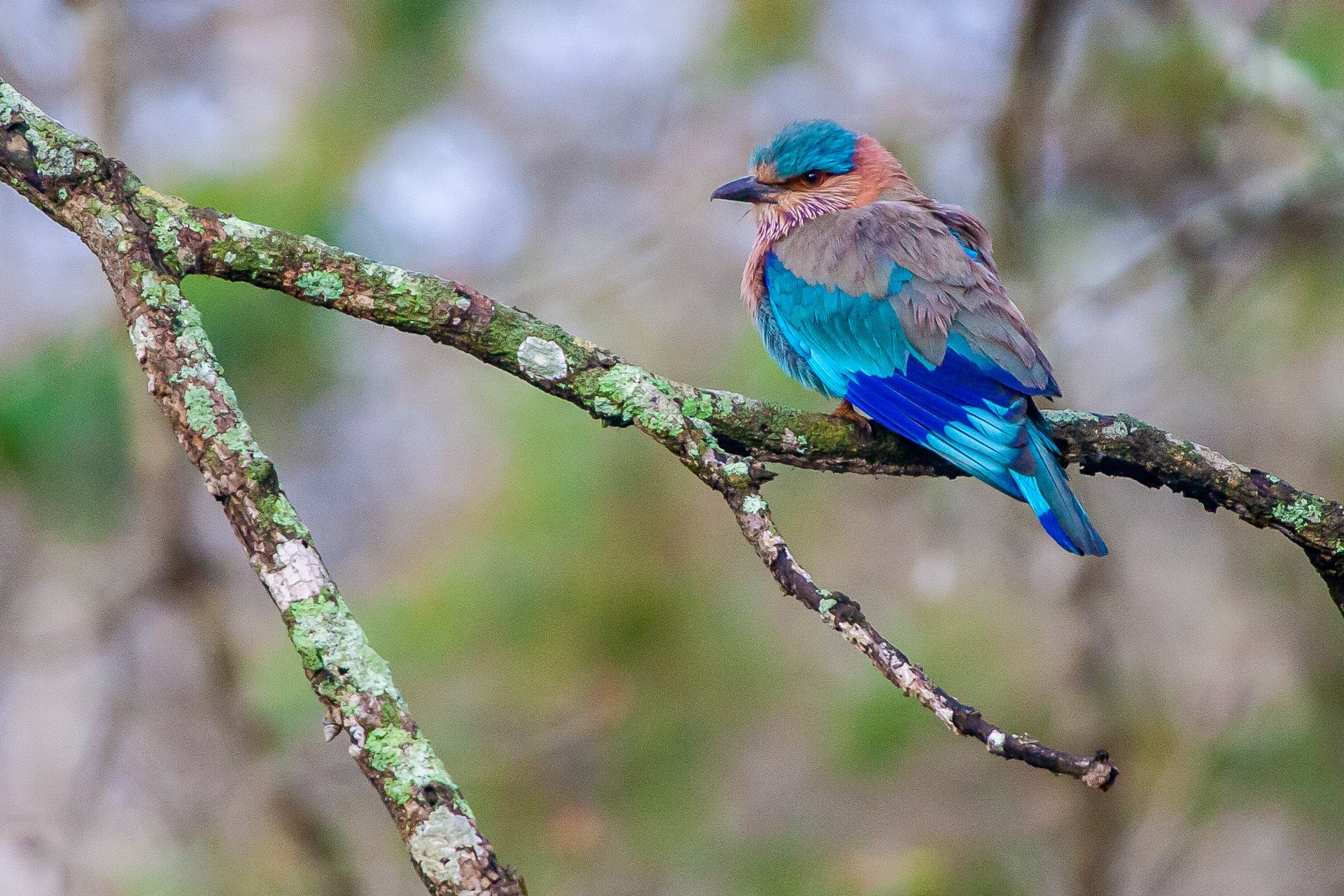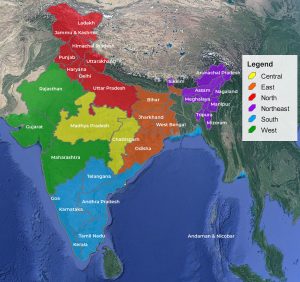India is an incredibly diverse country in many aspects, birds being no exception. 1,354 bird species (according to latest IOC taxonomy) occur in India[1][2], constituting 12% of the world’s avifauna. This ranks India in the top ten countries globally for species diversity. 83 species are endemic, i.e. found nowhere outside of India, with another 161 species ‘near-endemic’, primarily confined to the Indian Subcontinent.
Biogeographic Regions of India
This diversity can be explained in part by the fact that the Indian landscape contains 10 different biogeographic regions, from the evergreen rainforests of the Western Ghats endemic hotspot in the southwest and the biodiversity hotspot of the North East forests; the hot and dry Thar Desert of Rajasthan in the west and the high-altitude cold desert of the Trans Himalayas in Ladakh and Himachal Pradesh; the mighty Himalayas, the youngest but highest mountain range in the world; and numerous scrub forests, large wetlands and extensive agricultural countryside from the Gangetic Plain to the Deccan Plateau, and across much of the rest of the country.
Most of the bird species in India are Oriental, with a large portion, especially in the north during winter, of Palearctic origin.
Common Birds
The birding visitor will immediately notice the abundance of common birds. Whilst the cities can be full of Black Kites, House Crows, Common Mynas and Rose-ringed Parakeets, even small urban parks and gardens can harbour Coppersmith and Brown-headed Barbets, Indian Grey Hornbills, Asian Koel, Spotted Dove, Common Tailorbird, Oriental Magpie Robin, Purple and Purple-rumped Sunbirds, and Jungle and Yellow-billed Babblers.
Venture out into the countryside and birdlife is very obvious: White-throated Kingfishers, Black Drongos, Green Bee-eaters and the occasional Indian Roller in the fields, Spotted Owlets, House Sparrows and Red-vented and Red-whiskered Bulbuls in small villages, Black-winged Stilts, Pied Kingfishers and White-browed Wagtails by village ponds, and Shikras soaring overhead.
With a cultural history of respect for birds – the Sarus Crane being revered for its fidelity, the Indian Peafowl worshipped by certain communities, and the arrival of the Pied Cuckoo being eagerly awaited as the harbinger of the monsoon for example – there has not been as much direct persecution as many other places. Birds typically therefore are very approachable, and photographic opportunities abound.
When and Where to Visit
The prime time for visiting India for birding is typically between October and April, when resident species are joined by hosts of migratory birds from across Europe and Asia, and especially November to March when most areas experience a very pleasant climate. However, the biogeographic diversity means that there is year-round birding with, for example, high-altitude areas of the Himalayas and Kashmir and Ladakh being at their best for breeding specialities and summer migrants between May and September.
For wildlife and travel lovers, visiting India is a must. Doing so with Bubo Birding gives you superb birding coupled with unique insights into conservation and culture within this fantastic country.
No single trip can do it justice though: browse our tours through the different regions of India, each of which provides a very different experience, as well as bird list. Having done one birding tour in India we are convinced you will be hooked: why not continue until you have joined the exclusive club who have completed our recommended ‘big 4’ tours below? Could this get you 800 species?!
| Region | Recommended ‘Big 4’ Tour |
| North | Classic North India |
| South | Western Ghats Endemics |
| West | Rajasthan & Gujarat |
| East & Northeast | Northeast India Highlights |
For more detailed planning and the likelihood of seeing particular species, browse our state checklists.
- Praveen, J., Jayapal, R., & Pittie, A., 2020. Taxonomic updates to the checklists of birds of India, and the South Asian region—2021. Indian BIRDS 17 (1): 1–3↩︎
- Recent additions to the India list are Rustic Bunting, Red-billed Starling, European Honey-Buzzard, White-faced Plover (recognised only as subspecies by Indian Birds), Willow Warbler, Japanese Thrush, Sichuan Leaf Warbler (pending formal acceptance), Three-banded Rosefinch, Rough-legged Buzzard, Sakhalin Leaf Warbler (replacing Pale-legged Leaf Warbler), Meadow Pipit, Eurasian Blackcap and Whinchat↩︎




Hi, I wanted to know your price.
Sure, if you email info@bubobirding.com and tell us what you are interested in we will let you know details and prices.
Hi, roeddwn i eisiau gwybod eich pris.
Ola, quería saber o seu prezo.
Hola, volia saber el seu preu.
Γεια σου, ήθελα να μάθω την τιμή σας.
Hi, ego volo scire vestri pretium.
Hi, kam dashur të di çmimin tuaj
Aloha, makemake wau eʻike i kāu kumukūʻai.